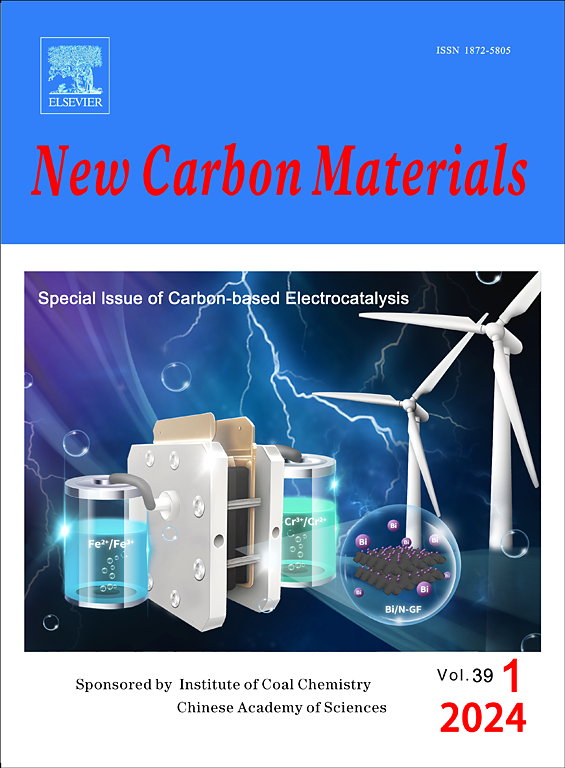Design, progress and challenges of 3D carbon-based thermally conductive networks
IF 5.7
3区 材料科学
Q2 Materials Science
引用次数: 0
Abstract
The advent of the 5G era has stimulated the rapid development of high power electronics with dense integration. Three-dimensional (3D) thermally conductive networks, possessing high thermal and electrical conductivities and many different structures, are regarded as key materials to improve the performance of electronic devices. We provide a critical overview of carbon-based 3D thermally conductive networks, emphasizing their preparation-structure-property relationships and their applications in different scenarios. A detailed discussion of the microscopic principles of thermal conductivity is provided, which is crucial for increasing it. This is followed by an in-depth account of the construction of 3D networks using different carbon materials, such as graphene, carbon foam, and carbon nanotubes. Techniques for the assembly of two-dimensional graphene into 3D networks and their effects on thermal conductivity are emphasized. Finally, the existing challenges and future prospects for 3D carbon-based thermally conductive networks are discussed.
三维碳基导热网络的设计、进展与挑战
5G 时代的到来刺激了高密度集成的大功率电子器件的快速发展。三维(3D)导热网络具有高热导率、高电导率和多种结构,被认为是提高电子器件性能的关键材料。我们对碳基三维导热网络进行了重要概述,强调了它们的制备-结构-性能关系及其在不同场景中的应用。我们详细讨论了热导率的微观原理,这对提高热导率至关重要。随后,深入介绍了使用不同碳材料(如石墨烯、碳泡沫和碳纳米管)构建三维网络的方法。重点介绍了将二维石墨烯组装成三维网络的技术及其对热导率的影响。最后,讨论了三维碳基导热网络的现有挑战和未来前景。
本文章由计算机程序翻译,如有差异,请以英文原文为准。
求助全文
约1分钟内获得全文
求助全文
来源期刊

New Carbon Materials
MATERIALS SCIENCE, MULTIDISCIPLINARY-
CiteScore
6.10
自引率
8.80%
发文量
3245
审稿时长
5.5 months
期刊介绍:
New Carbon Materials is a scholarly journal that publishes original research papers focusing on the physics, chemistry, and technology of organic substances that serve as precursors for creating carbonaceous solids with aromatic or tetrahedral bonding. The scope of materials covered by the journal extends from diamond and graphite to a variety of forms including chars, semicokes, mesophase substances, carbons, carbon fibers, carbynes, fullerenes, and carbon nanotubes. The journal's objective is to showcase the latest research findings and advancements in the areas of formation, structure, properties, behaviors, and technological applications of carbon materials. Additionally, the journal includes papers on the secondary production of new carbon and composite materials, such as carbon-carbon composites, derived from the aforementioned carbons. Research papers on organic substances will be considered for publication only if they have a direct relevance to the resulting carbon materials.
 求助内容:
求助内容: 应助结果提醒方式:
应助结果提醒方式:


